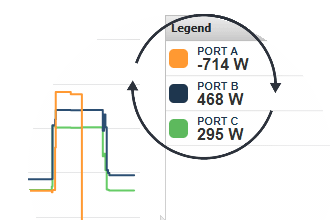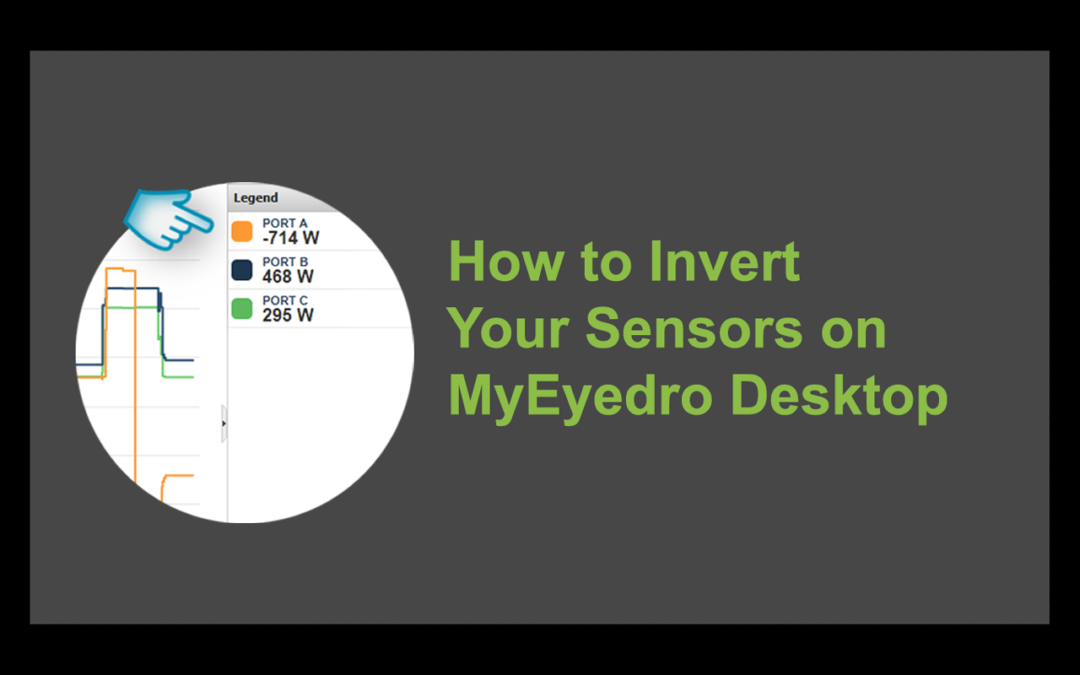
by Stacey McCuaig | Jun 17, 2021 | Blog, How-to Guide
Invert Your EYEFI Sensors in MyEyedro Desktop
Energy Monitoring Made Easy
Invert Your EYEFI Sensors in MyEyedro Desktop if the measurements that you are seeing are the opposite of what you were expecting.
- Go to Device Settings from the main menu (click on the 2 gears, top right)
- Remove the check mark from the box beside Hide Advanced Settings (bottom right above the Done button)
- In the sensor parameters go to Sensor Inverted then select the opposite of the current selection (Yes or No)
- Hit Save!
Follow along with the video to review the above steps in greater detail:
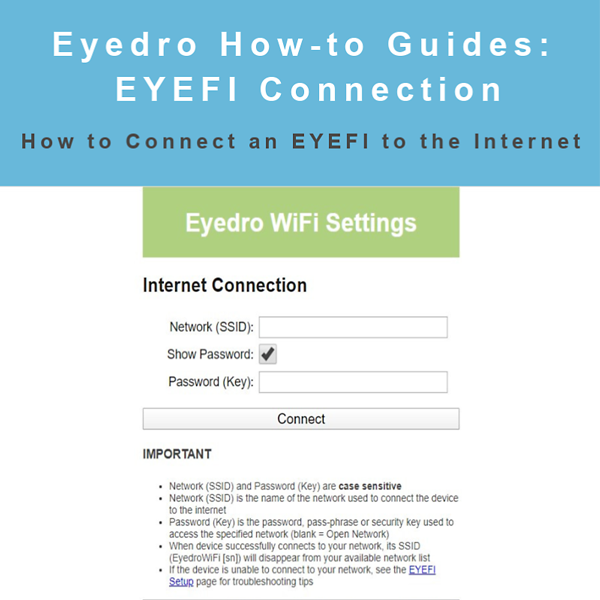
by Andrew Taylor | Mar 12, 2020 | Blog, How-to Guide
How to Connect an EYEFI to the Internet
Purpose:
To explain how to connect an EYEFI electricity monitor to the internet.
Instructions:
Before you will be able to access your new Eyedro EYEFI device via the MyEyedro (my.eyedro.com) cloud service, you must first provision your device to communicate with the internet.
- To connect (provision) an EYEFI device, first plug it in with the provided power adapter. After a few moments, you should see a network created by your EYEFI device in your list of available WiFi networks (as shown below):
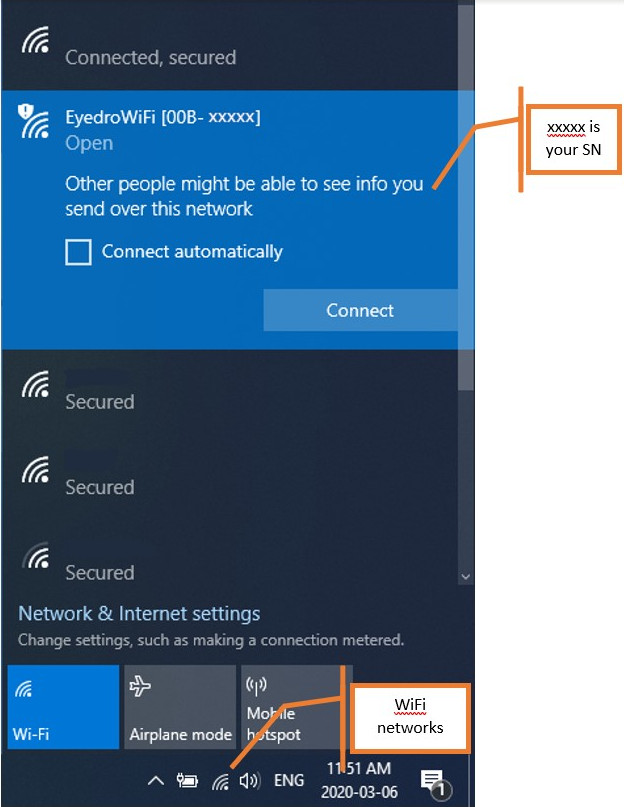
EYEFI in Available WiFi Network List
- Select the appropriate network from the list and click connect.
- Once connected to the Eyedro WiFi network, open a web browser and navigate to eyedro.com/setup (192.168.1.1/setup works too.)
- You should be presented with the Eyedro WiFi Settings page. Note that if you arrive at a different page e.g. your EYEFI’s local dashboard, you can click on the Network link at the bottom of the page which will take you to the Eyedro WiFi Settings page.
The Eyedro WiFi Settings page looks like this:
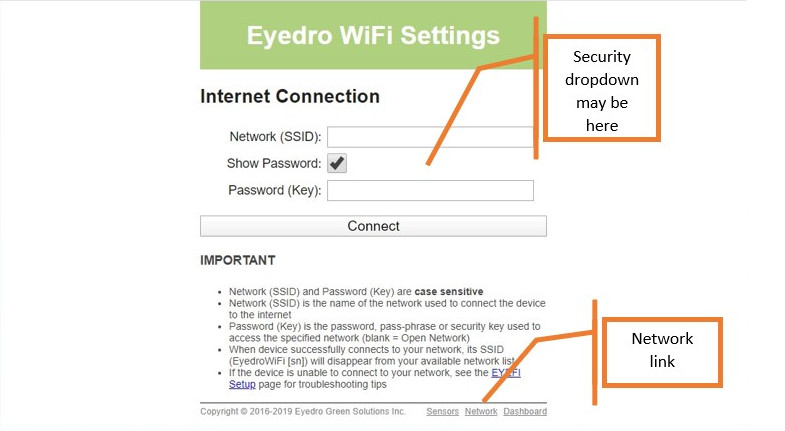
Eyedro WiFi Settings
On some EYEFI devices you may also see a security setting drop-down menu option. In this case, select WPA/WPA2 if your network requires a password. If no password is required, select Open.
- Enter your WiFi Network name (SSID) and Password (if applicable) into the appropriate boxes. Important! These parameters are CASE SENSITIVE. Inputting either incorrectly will cause the process to fail.
- Once you click Connect, you will be prompted to reconnect to your WiFi network.
If the process was successful, you will now be able to add your EYEFI device to your My.Eyedro.com account.
If the process was not successful, the EYEFI will reappear in your available network list. The most likely cause for this is an incorrectly entered network name or password – please double check the required credentials of the network you are connecting to, power cycle the EYEFI device and try again.
Note: If you are still having problems connecting and have changed the DNS settings in your router (i.e. to use an ad blocker), try switching back to use the default settings. Alternately use Google’s DNS servers 8.8.8.8 (primary) and 8.8.4.4 (secondary).
For more information:
To contact Eyedro Support:
Via web: Contact Us

by Stacey McCuaig | Dec 4, 2018 | Blog, How-to Guide
Eyedro EYEFI Setup
It looks like you’ve missed a step in your EYEFI setupTo provision your EYEFI device, carefully follow these steps:
- Connect to the WiFi network created by your EYEFI device (EyedroWiFi [xxx-yyyyy] – where xxx-yyyyy matches the serial number).
- Open a web browser and you should be redirected to the network provisioning page. If not automatically redirected, go to http://192.168.1.1/network.
- Enter the Network Name (SSID) of the desired network to connect through (note that this field is case sensitive).
- Choose Security: WPA/WPA2 (PSK) or Open.
- If security is not ‘Open’, enter the Password of the desired network to connect through (note that this field is case sensitive).
- Click Connect.
- If your settings have been accepted by the device you will see the message shown below. IMPORTANT: This step will not notify you of errors in your entered information only that the device has received the information you provided.

If you continue to see the network created by your EYEFI device (EyedroWiFi [xxx-yyyyy]) in your available networks list, it means that it isn’t able to connect to the provisioned network for some reason. See troubleshooting tips below.
But I followed the steps…If you have followed all the provisioning steps above but your device is still not able to connect to your network, try these troubleshooting tips:
- If your computer is also connected to the internet via an Ethernet cable, please disconnect the Ethernet cable and retry the above provisioning steps.
- Please follow each step of the above provisioning process carefully.
- Please ensure your credentials (Network Name and Password) match exactly. The fields are case sensitive.
- Click the “Show Password” button so you can see the password text and ensure it is entered correctly.
- Ensure you are connecting to a 2.4GHz WiFi network.
- Use another WiFi device in your house (i.e your cell phone) to verify the signal strength of your 2.4GHz WiFi network at the point of EYEFI device installation. If your phone can’t see the WiFi network or the signal strength is very low, the EYEFI device will have the same issue.
- Try moving the EYEFI device (with power supply) into the same room as your wireless router to test if it can connect. Sensors can be left in the panel and just disconnected from the EYEFI device for this test.
- Connect your computer to the desired network and log into the router setup page – typically accessed by entering 192.168.0.1 from a web browser (see the user manual for your router for instructions).
- From your router’s setup page, ensure DHCP is enabled. DHCP is how the EYEFI receives an IP address required to communicate on your network and to the internet.
- From your router’s setup page, check if the device is connected to your network and has been assigned an IP address. There should be a list of connected devices on one of the configuration pages (see the user manual for your router for details).
- From your router’s setup page, ensure there is no firewall enabled that could be blocking (port 80) traffic to/from the EYEFI device.
- If you have changed the DNS settings in your router (i.e. to use an ad blocker), try switching back to use the default settings. Alternately use Google’s DNS servers 8.8.8.8 (primary) and 8.8.4.4 (secondary)

